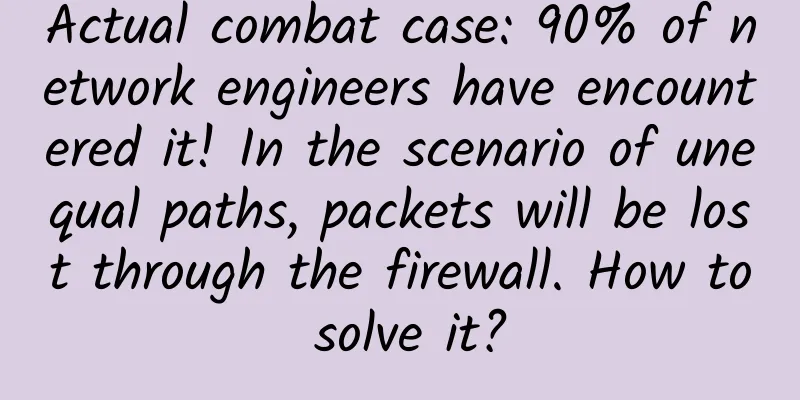How to fight the emergency communication battle in the “golden 72 hours”?

|
Life is the most important thing, and unity is strength. The 72 hours after a disaster is the golden rescue time for emergency response. There are many factors that hinder the rescue of trapped people, mainly the blockage of transportation and communication. As we all know, my country has built the world's largest fiber optic network, 4G network and 5G independent networking network, and its network supply capacity is the world's leading. However, in the face of major disasters, the interruption of communications often causes people's criticism, and some people even question that my country's network infrastructure is worrying, and its reputation is somewhat unworthy of its reality.
In fact, this is not the case. Some experts pointed out that the reasons for signal interruption in natural disasters are nothing more than two major factors. One is that there are problems with the key supporting facilities of the base station. For example, natural disasters have destroyed the power supply facilities, causing the base station to lose power. Although the base station will be equipped with an emergency power supply (when the base station loses power, it will be powered by the emergency power supply), when the emergency power supply is exhausted, the base station will stop working. Or natural disasters have destroyed facilities such as optical cables connecting the base station, causing the base station to become an "island" and unable to connect to the communication network. The second is that the base station itself is damaged by natural disasters and cannot work normally. When the public communication network is interrupted due to force majeure, emergency communication becomes a strong supplement to communication security. As an important part of my country's public security system, emergency communication plays the role of "vanguard" in timely, accurate and smooth transmission of first-hand information after an emergency. It is the central nervous system for decision makers to correctly command emergency rescue and disaster relief. Emergency communication can only be the first line of defense for safety if it can truly transmit emergency rescue and disaster relief information in a timely, accurate and smooth manner when an emergency disaster strikes. my country currently has a systematic emergency response capabilityIn today's society, the increasing number of large-scale gatherings and a series of emergencies (such as earthquakes, fires, terrorist incidents, etc.) have brought great pressure to the existing communication system. In the early stage of an emergency, due to the social concern and even public panic, the communication business volume surges in a short period of time, which in turn causes varying degrees of network congestion or even interruption. At this time, the wireless emergency communication system is extremely important. At present, the common communication guarantee means in disaster relief include satellite communication, emergency communication vehicles, and drone emergency communication. Among them, satellite communication has great limitations because of the expensive terminal equipment and high communication costs. In the event of a major disaster or emergency, it is impossible to ensure that every department or individual can contact the outside world through satellite phones. The emergency communication vehicle is the most common emergency communication equipment. It is like a mobile base station. It is mainly used to solve the communication capacity problem of large-scale activities. It has been widely deployed throughout the country, but it is greatly affected by factors such as road conditions and has a small coverage area. Drone emergency communication has gradually improved thanks to the great development of drone technology in recent years. Drones have significant advantages such as simple operation, flexible application, low cost, strong adaptability, and wide coverage. When used in the field of emergency communication, drones can not only solve the restrictions on facility construction caused by terrain, climate, natural disasters, etc., and effectively guarantee the popularization of emergency communication services, but also further improve the emergency communication guarantee capabilities and levels, making communication services more stable, more durable, and with a wider coverage. However, there are still technical and management problems such as endurance in emergency communication of drones. It is worth mentioning that in recent years, many global communication operators including Verizon, AT&T, Google, China Telecom, China Mobile, and China Unicom have joined hands with relevant research institutions to conduct research on the use of floating platforms combined with cellular communication base stations to achieve emergency communication guarantee, mainly involving the integration of platforms such as drones and helium balloons with communication base stations. With the outbreak of the COVID-19 pandemic in 2020, emergency communications have taken on new forms, supported by cloud computing, big data, and 5G technologies, and my country's emergency communications have entered a new stage. Drawing on overseas emergency communications models, and with the gradual maturity of my country's satellite Internet, private network communications and other industries, my country's emergency communications are gradually moving towards satellite and private network. "my country currently has a systematic emergency communication capability." Industry experts said. First, it has a dual system of "human defense" and "physical defense". The so-called "human defense" means that a relatively complete system has been formulated. In various emergency scenarios, there are systems to follow and positions to be assigned; the so-called "physical defense" means that different types of emergency communication networks and equipment are available to provide services for various scenarios. Secondly, it already has a complete emergency communication guarantee network and equipment foundation. Specifically, through the combination of satellite communication, ground mobile communication, broadcast communication, radio communication and other networks with air base stations, handheld devices, emergency broadcasting and other terminal equipment, emergency communication is guaranteed. Finally, it already has emergency communication service capabilities for various scenarios and various types of personnel. In terms of scenarios, for temporary intensive personnel (such as concerts, Spring Festival travel, etc.), emergency communication guarantee vehicles are used; for the communication of major matters, emergency broadcasting is used; for major natural disasters where all ground base stations are destroyed, communication services are provided by drones. In terms of personnel, differentiated guarantee methods are adopted for emergency rescue workers and the general public. In the previous rescue and relief process of the rainstorm in Henan, the three major operators all adopted some new emergency communication solutions. For example, China Telecom carried emergency equipment such as tethered drone base stations and backpack base stations, and opened tethered aerial drone base stations (tethered drones are emergency communication base stations with the characteristics of rapid deployment, lightness and flexibility, and low requirements for take-off and landing environments. They can achieve fast, reliable, and cheap broadband communications within a range of tens of kilometers), helping the disaster area to restore communications, and using multiple China Telecom Tiantong satellite phones to ensure smooth command and dispatch. China Mobile's Wing Loong large-scale long-flight drone emergency communication system (the system uses large fixed-wing drones to carry China Mobile's wireless communication base stations, uses 4G/5G communication technology, and transmits through satellites to provide 24-hour emergency communication guarantee solutions, completely free from the constraints of ground power supply and communication backhaul, and can quickly open up communications between the command center and designated areas) across provinces to remotely maneuver to the disaster-stricken areas, fully guarantee communications in the disaster area, and effectively reduce the loss of life and property of the people in the disaster area. Many measures show that the operators' emergency communication technical means and deployment capabilities have made significant progress. Challenges and suggestions for the development of emergency communicationsAt present, my country has realized the importance of emergency communication systems, and various departments have configured a number of emergency communication systems and equipment, accumulated considerable experience in use, and made great progress in emergency communication support. However, under the new situation, the importance and urgency of the wireless communication industry are becoming increasingly prominent, and the emergency communication network still faces many problems to be solved. First, there is a great reliance on ground equipment (such as base stations), which limits the ability to provide support in the event of extreme natural disasters. For example, in the disaster relief work in Henan, although there were a large number of medium and low altitude propeller wing drone base stations, they were unable to communicate with the ground, and there was only one high altitude pterosaur drone in the country, which needed to be deployed from Guizhou. Second, in the context of the current public's high reliance on communication networks, existing emergency communications can only replace about 10% of the original usage behavior. For example, when there are dense crowds, even with emergency communication vehicles, data transmission cannot be achieved well; when major natural disasters occur, voice and text messages can only be sent when the Wing Loong is in the air. So how to solidly promote the development of the emergency communications industry in the next step? In this regard, relevant experts from the Ministry of Industry and Information Technology put forward three suggestions. First, do a good job in top-level design and speed up the formulation of the "National Emergency Communications 14th Five-Year Plan" to guide the development of emergency communications in the next five years. The second is to strengthen capacity building. Seize the development opportunities of new technologies such as 5G, satellite Internet, big data, and artificial intelligence, and strive to break through a number of core technologies required for emergency communications security, so as to achieve faster security responses and richer services, and comprehensively improve the national public safety emergency communications security capabilities. The third is to improve the team level. Continuously establish and improve a series of work such as talent team training and qualification certification to lay a talent foundation for the innovative development of emergency communications. Specifically in terms of capacity building, industry experts proposed to strengthen the "three transformations". First, wireless. In comparison, fixed-line facilities are more vulnerable to disasters and are inconvenient to deploy in emergencies, so wireless (including various ground wireless networks, satellite networks, etc.) is a more effective way. Second, layering. Specifically, it includes two aspects: one is to implement different emergency plans for personnel at different levels; the other is to have different application scenarios for different types of networks and equipment. Third, civilianization. In other words, try to make all emergency networks and equipment useful in non-emergency situations. For example, the 1400MHz emergency communication network can be used as an urban Internet of Things on a daily basis; emergency broadcasts can be used as village-to-village broadcasts on a daily basis; base station drones can be used as general drones after replacing modules. How to build an emergency communication network so that it can play a role in the first time when a major natural disaster strikes is a test question before us. The industry chain needs to unite all parties, further increase research efforts, support national government departments to do a good job in the top-level design of emergency communications and the formulation of industry-related policies; strengthen scientific research and innovation, strengthen standards and specifications, promote the development of advanced and applicable technologies and equipment; promote the coordination of the industry chain, strengthen the demonstration and application of new products, and promote the healthy development of the emergency communication industry. |
<<: Explore Java application startup speed optimization
>>: Croatia officially issues 5G license
Recommend
RackNerd's 3 KVM promotions in April start at $13.89 per year, with multiple computer rooms available
RackNerd has released its April promotional packa...
HostKvm: Hong Kong International/Korea KVM Summer 30% off, 2G memory package monthly payment starts at US$5.95
HostKvm is a foreign hosting service provider fou...
2019: 5G takes center stage, changing lives and spreading across industries
Every upgrade of communication technology brings ...
In the F5G era, home broadband is moving towards Gigabit. Don’t let the optical modem hold you back.
Mobile networks have entered the 5G era, and thei...
Dalian leads the nation in "Internet + Government Services"
Come listen to the stories of several friends and...
2017 F5 makes applications fly!
[51CTO.com original article] In 2017, what will y...
WiFi will be replaced in the future, what do you think?
WIFI is really going to be replaced! But it's...
AlphaVPS: AMD EPYC/Ryzen starting from 2.99 Euros per month, Los Angeles/Germany/Bulgaria data centers
AlphaVPS is a Bulgarian hosting company founded i...
The Evolution of Hybrid Workplace Networking
The past few months have significantly changed th...
Akamai Li Wentao: Starting from four major strategies, helping enterprises build a new paradigm for public cloud
In today's digital age, cloud computing has b...
KVMCloud: 50% off on all Hong Kong/Singapore/Korea/Japan VPS starting from NT$32/month
KVMCloud appeared on the tribe for the first time...
Survey: Germany more dependent on Huawei 5G equipment than before
Germany is even more reliant on Huawei for its 5G...
After 5G technology, there may not be 6G base stations! Why do you say that?
When the 4G technology standards were announced, ...
2G and 3G network retirement countdown, your old mobile phone may have to be thrown away
This also means that 2G and 3G technologies will ...
5G will change society in the future: eight application scenarios
The epoch-making 5G technology, in addition to a ...









